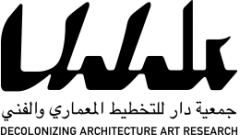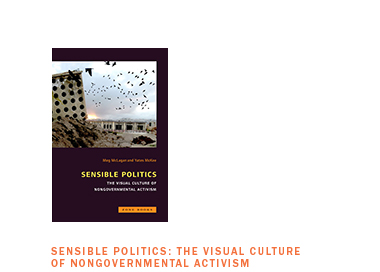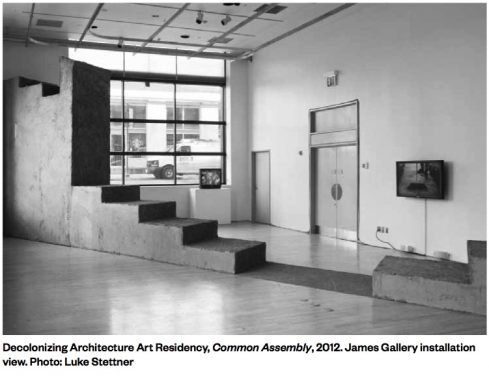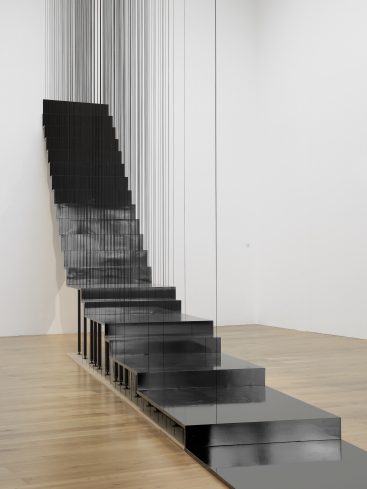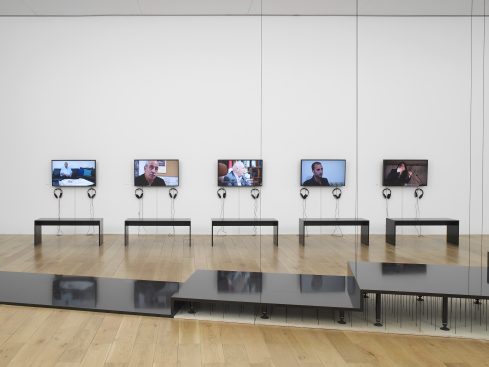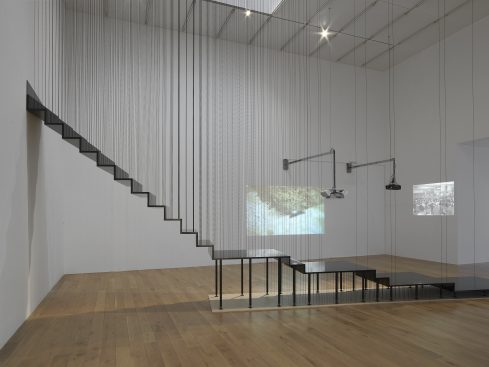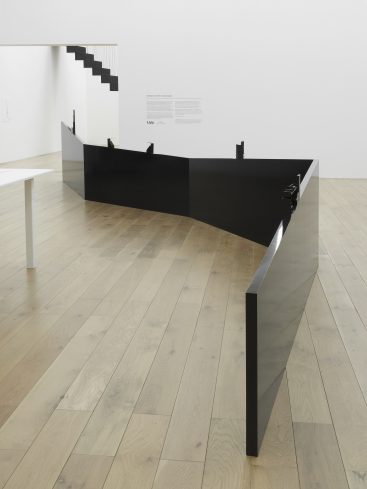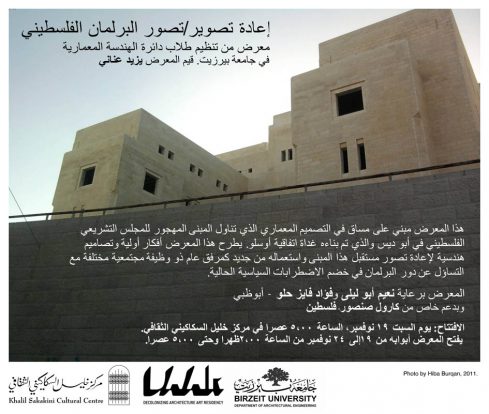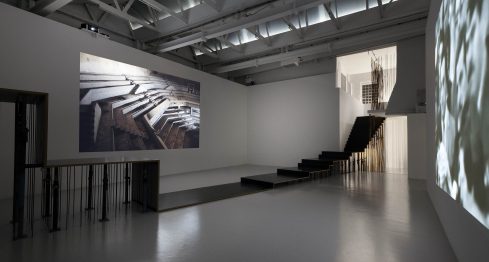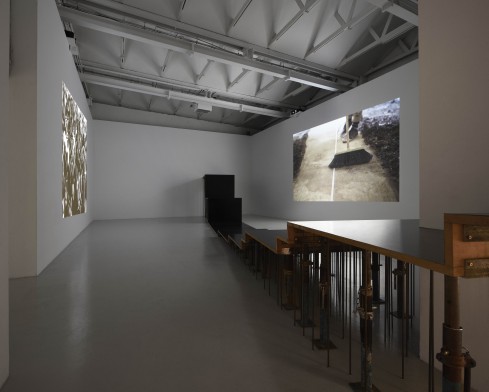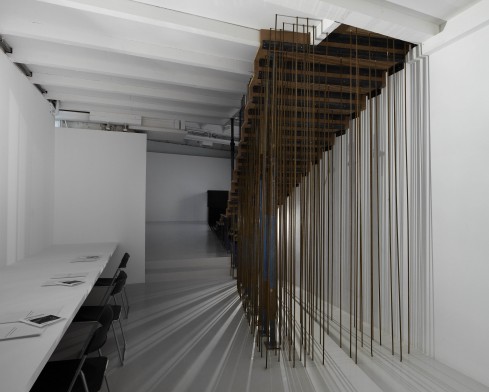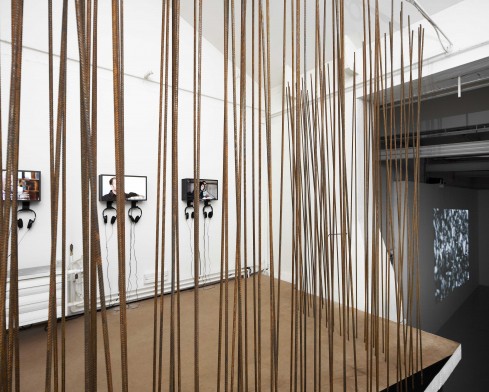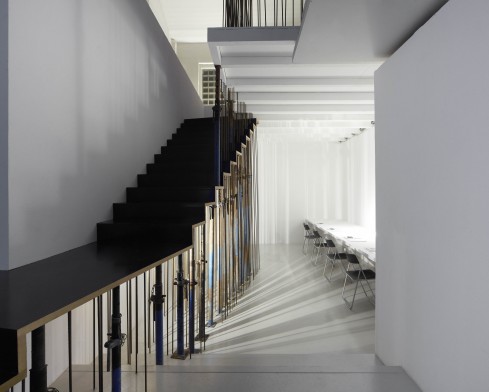The Herbert F. Johnson Museum of Art at Cornell University presents Lines of Control, an exhibition of videos, photographs, prints, paintings, sculptures, and installations by thirty-three international artists that grapple with the seductive simplicity of drawing lines as a substitute for learning how to live with each other. Living within and across these lines is a messy, bloody business but also offers a productive space where new nations, identities, languages, and relationships are forged.
At its core, this exhibition investigates the historic upheaval of the 1947 partition of India that spawned the nations of Pakistan and later Bangladesh. The exhibition is part of an ongoing project initiated by Green Cardamom, a London-based nonprofit arts organization, in 2005. Expanding on the significance of partition in South Asia, Lines of Control at the Johnson Museum also addresses other partitioned areas: North and South Korea, Sudan and South Sudan, Israel and Palestine, Ireland and Northern Ireland, Armenia and its diaspora, and questions of indigenous sovereignty in the United States. The exhibition explores the products and remainders of partition and borders characteristic of the modern nation-state, and interrogates the continued impact of colonization, the physical and psychic violence of displacement, dilemmas of identity and belonging, and questions of commemoration.
Artists represented in the exhibition are Bani Abidi, Francis Alÿs, Sarnath Banerjee, Farida Batool, Adam Broomberg & Oliver Chanarin, Muhanned Cader, Duncan Campbell, Iftikhar Dadi, DAAR, Anita Dube, Taghreed Elsanhouri, Sophie Ernst, Gauri Gill, Shilpa Gupta, Zarina Hashmi, Emily Jacir, Ahsan Jamal, Nadia Kaabi-Linke, Amar Kanwar, Noa Lidor, Mario Mabor, Nalini Malani, Naeem Mohaiemen, Tom Molloy, Rashid Rana, Raqs Media Collective, Jolene Rickard, Hrair Sarkissian, Seher Shah, Surekha, Hajra Waheed, Young-Hae Chang Heavy Industries, and Muhammad Zeeshan.
Co-organized by Green Cardamom and the Johnson Museum, the exhibition is curated by Hammad Nasar, Iftikhar Dadi, and Ellen Avril, with assistance from Nada Raza. Major funding for the exhibition, catalogue, and accompanying programs is provided by the E. Rhodes and Leona B. Carpenter Foundation, the Jarett F. and Younghee Kim-Wait Fund for Contemporary Islamic and Middle Eastern Arts, the Jarett F. and Younghee Kim-Wait Fund for Korean Arts, Gandhara-Art, the Mondriaan Foundation, and Ali and Amna Naqvi. Additional support for the symposium, catalogue, and film program was provided by Cornell University’s Institute for Comparative Modernities; the College of Architecture, Art, and Planning; the Minority, Indigenous, and Third World Studies Research Group; the Department of Art; the Mario Einaudi Center for International Studies; the Department of the History of Art; Cornell Cinema; and the South Asia Program.
Lines of Control: A Symposium
Saturday, March 3, 4:00–6:00 pm, and Sunday, March 4, 9:00 am–5:00 pm, at the Johnson Museum
Artists, scholars, and curators will address topics relevant to the exhibition (details to be announced). Seating is limited; registration is free. To register, call 607 254-4642 or e-mail eas8@cornell.edu.
Herbert F. Johnson Museum of Art
The Johnson Museum has a permanent collection of over 35,000 works of art from Africa, Asia, Europe, and North and South America. The museum building was designed by I. M. Pei and opened in 1973, funded by Cornell alumnus Herbert F. Johnson, late president and chairman of S C Johnson.
Herbert F. Johnson Museum of Art
Cornell University
Ithaca, NY 14853
Tuesdays–Sundays, 10 am–5 pm
Free admission
